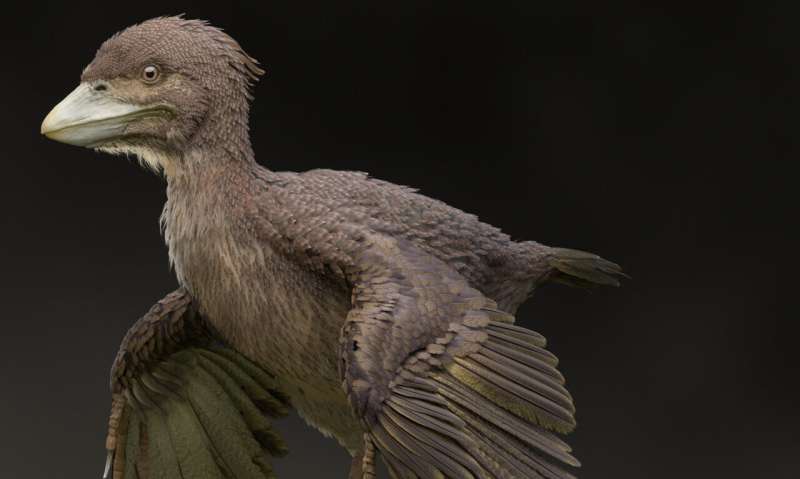November 18, 2019 report
Researchers in Japan uncover fossil of bird from Early Cretaceous

A combined team of researchers from Japan and China has announced the finding and study of the fossilized remains of a bird from the Early Cretaceous. In their paper published in the journal Communications Biology, the group describes where the fossil was found, its features and what it represents to avian evolutionary history.
The researchers report that the fossilized bird was found in a quarry just outside of Katsuyama in a central part of Japan. It has subsequently been named Fukuipteryx prima and has been dated to approximately 120 million years ago—putting it in the Early Cretaceous. The researchers note that the find represents the first fossilized remains of a bird from that period to be found outside of China. They report that the fossil was preserved in three dimensions, allowing scientists to see how its skeleton looked when it was alive—they also learned that it had brown feathers and was approximately the size of a modern pigeon.
A fossil named Archaeopteryx, found in Germany, is the oldest known remains of a bird—the raven-sized, bird-like creature existed during the late Jurassic period. Many scientists believe it represents the beginning of the divergence of dinosaurs that walked versus those that were able to fly. The earliest known birds from the Cretaceous were found in northeastern China and differ in one significant way from F. prima—they had no pygostyle, a bony triangular plate found at the back end of the backbone in modern birds. Its purpose is to serve as an anchor for tail feathers and the muscles that support them. That F. prima did have a pygostyle suggests that it was further along the evolutionary path toward what are now modern birds—at least in some respects.
The researchers note that despite having a pygostyle, F. prima did have a lot in common with Archaeopteryx, such as an unfused pelvis, a strong wishbone, forelimbs and clawed fingers. They also suggest the find indicates that bird evolution took many forms and thus did not follow a single line. They also note that the climate in which F. prima lived was much different from that of birds living in China from roughly the same time periods.
More information: Takuya Imai et al. An unusual bird (Theropoda, Avialae) from the Early Cretaceous of Japan suggests complex evolutionary history of basal birds, Communications Biology (2019). DOI: 10.1038/s42003-019-0639-4
Journal information: Communications Biology
Provided by Science X Network
© 2019 Science X Network





















